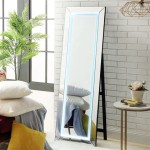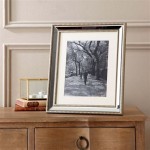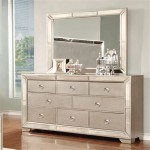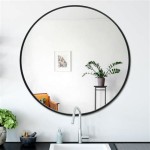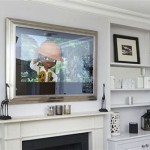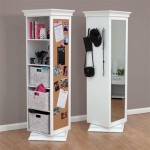How to Put a New Frame on a Mirror
A mirror is a versatile piece of furniture that can add a touch of elegance and functionality to any room. Whether it's a vintage antique or a modern design, a new frame can breathe life into an old mirror, transforming it into a fresh and stylish centerpiece. Replacing the frame on a mirror is a relatively simple DIY project that can be accomplished with basic tools and materials.
Assessing the Mirror and Frame
Before embarking on the framing project, it's essential to assess the mirror and the new frame. Carefully evaluate the condition of the mirror itself. If it's cracked or chipped, it may be necessary to replace it before proceeding with the framing. Examine the existing frame to determine the type of attachment method used. Some frames may be glued or nailed directly to the mirror, while others may have a separate backing board that can be detached.
Choosing the Right Frame
The selection of the new frame is crucial to the overall aesthetic of the mirror. Consider the style of the mirror, the decor of the room, and personal preferences. If the mirror is an antique, a traditional frame might be suitable. For a modern setting, a sleek and minimalist frame would be more appropriate. Measure the mirror's dimensions to ensure the new frame fits perfectly. Choose a frame width that complements the mirror's size and style.
Preparing the Frame and Mirror
Once the new frame is chosen, prepare it for attachment. If the frame has a separate backing board, remove it carefully to access the attachment points. Clean both the mirror and the frame thoroughly to remove any dirt or debris. If the old frame is glued to the mirror, try to remove it gently using a putty knife or a scraper. If the adhesive is stubborn, apply heat with a hairdryer to soften it before removal. Avoid using excessive force to prevent damaging the mirror.
Attaching the Frame
The method of attaching the frame to the mirror depends on the type of frame and the desired level of permanence. For temporary or removable framing, double-sided tape or adhesive strips can be used. If a more permanent solution is preferred, glue or small nails can be employed. For glue attachment, apply a thin bead of adhesive along the edges of the mirror and carefully position the frame on top. For nail attachment, use small brads or finishing nails to secure the frame to the backing board or directly to the mirror.
Securing the Frame
After the frame is attached, ensure it is secure and stable. If using nails, gently tap them in with a hammer and use a nail set to countersink them below the surface of the frame. Once the frame is attached, inspect it carefully for any gaps or unevenness. If necessary, adjust the frame slightly to ensure a snug and even fit. Allow the adhesive or glue to dry completely before hanging or displaying the framed mirror.
Hanging the Mirror
Hanging the mirror requires careful consideration of the wall surface and the weight of the framed mirror. For lighter mirrors, a simple hook or adhesive strip may be sufficient. For heavier mirrors, a sturdy screw hook or wall-mounted bracket is recommended. Ensure that the hook or bracket is securely attached to the wall to prevent the framed mirror from falling.
Finishing Touches
Once the framed mirror is hanging, take a step back and admire the transformation. If desired, add decorative touches to enhance the overall look. Consider adding a small shelf or decorative elements to the frame. If the frame has glass, clean it thoroughly with a microfiber cloth and window cleaner to remove any fingerprints or smudges.

How To Frame A Bathroom Mirror Heather O Steen Photography

Diy Stick On Mirror Frame Sawdust Sisters

Installation New Frame My Mirror

How To Add A Frame Your Bathroom Mirror

How To Frame A Mirror

How To Frame A Mirror Erfly House

Mirror Stuck On The Wall Add A Frame To An Plate Glass In Minutes Th Kits Bathroom Diy

How To Decorate A Mirror With Tile Sand And Sisal

Installation New Frame My Mirror
How To Upgrade Your Builder Grade Mirror Frame It


